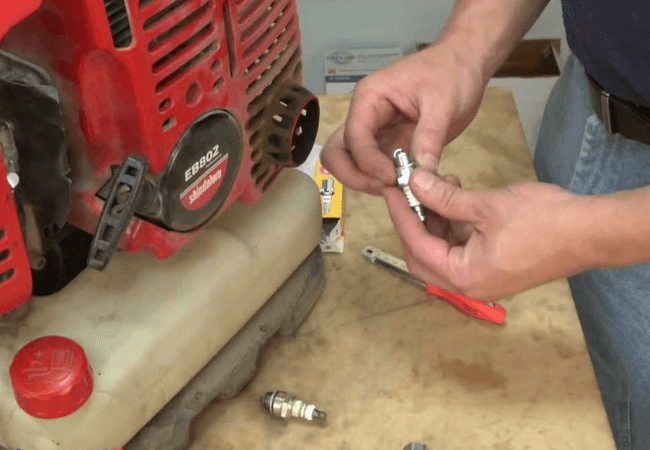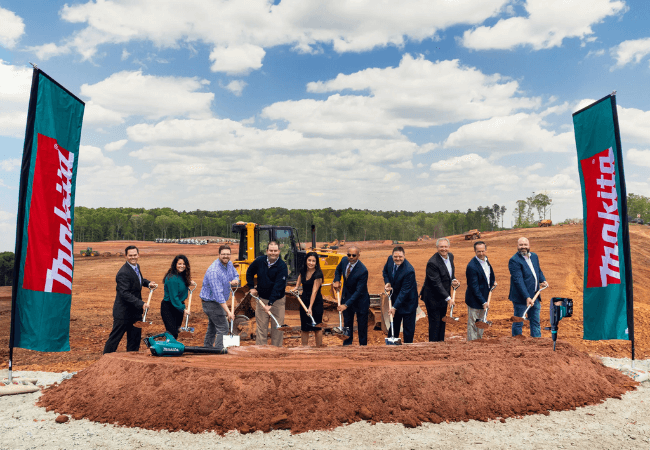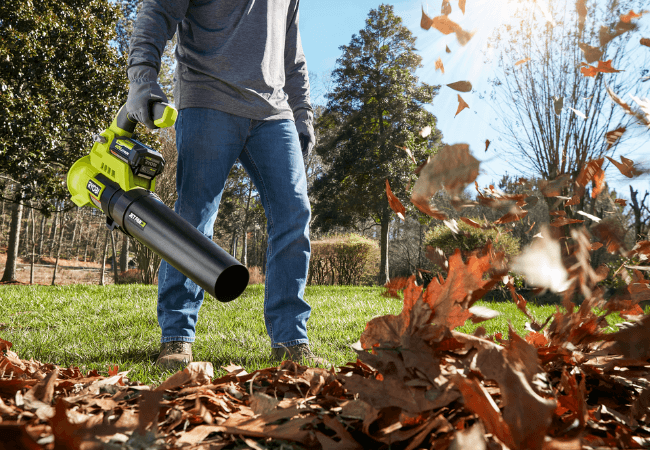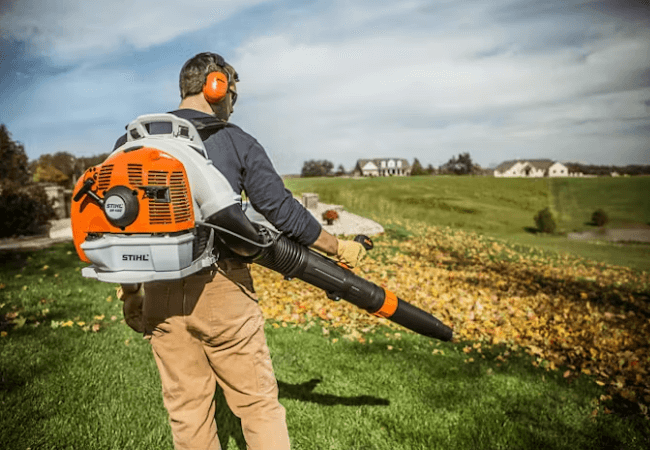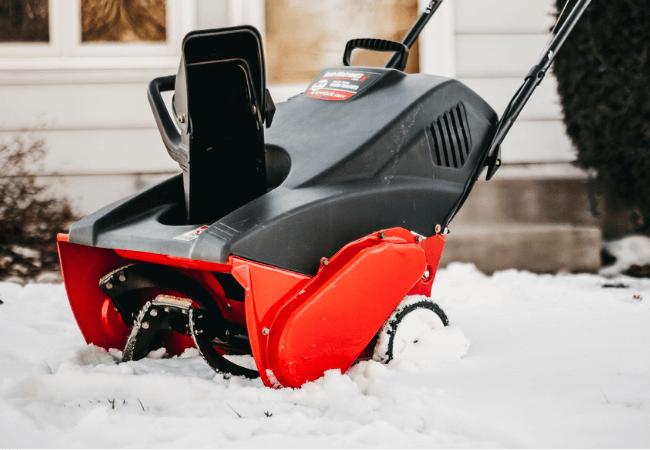Snowblowers are essential for keeping driveways, sidewalks, and other outdoor areas clear of snow during the winter months.
However, when suddenly your snowblower’s auger suddenly stops when it hits snow, it can be frustrating and leave you stranded in the cold.
It can prove to be an exasperating ordeal, but mercifully, various prevailing rationales exist for this predicament and remedies that can be employed to redress it.
In this article, we will discuss the most common reasons why your snowblower auger stops when it hits snow and provide solutions to fix the problem.
Why Your snowblower auger stops when it hits snow?
Your snowblower auger can stop turning when it hits snow for various reasons, including broken shear pins, a worn-out belt, or a faulty auger gearbox.
Other potential causes may include a loose or damaged auger control cable, worn-out bearings, low engine power, or wet snow.

To resolve these issues, you can replace broken parts, adjust or replace the control cable, check the engine power, or clear wet snow in smaller sections.
We will take you on an extensive journey elucidating how you can effectively address and resolve this particular difficulty.
Troubleshoot – Common Reason and how to fix it
1. Shear Pins
Shear pins are small metal bolts that connect the auger blades to the drive shaft. They are designed to break if the auger blades hit a hard object, such as a rock or chunk of ice.
This safety feature prevents the auger blades from damaging the snowblower’s engine or transmission.
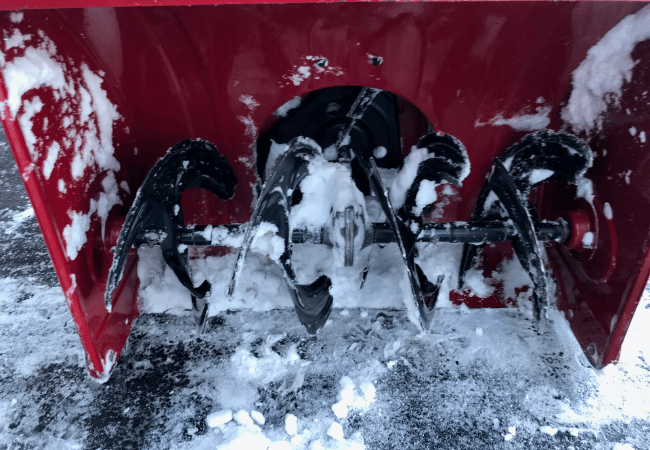
If the shear pins are broken, the auger blades will stop turning, and you will need to replace them to get the machine running again.
Solution: To replace the shear pins, it is imperative that you first remove the existing ones and then install fresh ones.
You can procure replacement shear pins from your nearest hardware emporium or online marketplace.
Remember to substitute the old pins with ones of equal size and category as the ones you are replacing.
2. Belt
The snowblower’s belt transfers power from the engine to the auger blades. Should the belt become frayed or impaired, it may inadvertently loosen or fracture, leading to the consequent cessation of the auger blades‘ rotation.
To avert this issue, it is imperative to inspect the belt periodically by removing the cover and meticulously examining it for any signs of degradation or impairment.

Solution: If the belt is damaged, you must replace it. You can find replacement belts at your local hardware store or online.
Make sure to replace the belt with the same type and size as the original one.
3. Auger Gearbox
The auger gearbox is part of the snowblower connecting the engine to the blades. If the gearbox is damaged or worn, it can cause the auger blades to stop turning.
You can check the gearbox by removing the cover and inspecting it for any signs of wear or damage.
Solution: If the gearbox is damaged, you must replace it. You can find replacement gearboxes at your local hardware store or online.
Make sure to replace the gearbox with the same type and size as the original one.
4. Auger Control Cable
The auger control cable primarily governs the auger blades’ engagement and disengagement regulation.
If the cable is either lax or injured, it can culminate in the abrogation of the auger blades’ operation.
To preclude this outcome, inspect the cable thoroughly for any indicators of deterioration or ruin.
Solution: You must adjust or replace the cable if it is loose or damaged. To adjust the cable, locate the adjustment nut and turn it until it is tight.
If the cable has sustained damage, replacing it with a new one will be necessary. You can find replacement cables at your local hardware store or online.
5. Auger Bearings
The auger bearings are pivotal in supporting and facilitating the seamless rotation of the auger blades.
If these bearings have suffered wear or injury, it may result in the abrupt discontinuation of the auger blades’ operation.
You can check the bearings by removing the cover and inspecting them for any signs of wear or damage.
Solution: If the bearings are worn or damaged, you must replace them. You can find replacement bearings at your local hardware store or online.
It is crucial to ensure that you replace the bearings with ones of identical size and category as the original bearings to maintain the optimal functionality of the equipment.
6. Engine Power
The snowblower’s engine power can also be why the auger blades stop turning.
If the engine is not generating enough power, it can cause the blades to slow down or stop altogether. This can happen due to a clogged air filter, dirty spark plug, or old fuel.
Solution: To alleviate this issue, a comprehensive examination of the air filter, spark plug, and fuel system is necessary.
If the air filter is found to be obstructed, it should either be cleansed or replaced. A dirty spark plug can also contribute to the issue; therefore, it should be similarly tended to by cleansing or replacement.
In the event that the fuel has aged and decayed, draining the tank and replenishing it with fresh fuel is an essential step to be undertaken.
7. Wet Snow
If you’re trying to clear wet snow, it can cause the auger blades to stop turning. Wet snow is heavier and stickier than dry snow, and it can get stuck in the auger blades, causing them to stop turning.

Solution: To resolve this issue, try to clear wet snow in smaller sections. Use a shovel to break up any clumps of snow and clear them manually before using the snowblower.
You can also try spraying the auger blades with silicone to prevent the snow from sticking.
Conclusion
A snowblower is a valuable tool for clearing snow, but it can be frustrating; the snowblower’s auger stops when it hits snow.
By understanding the common reasons why this can happen and implementing the solutions we have discussed, you can easily keep your snowblower running smoothly and clear snow.
Adhering to the manufacturer’s guidelines and exercising proper safety protocols while operating your snowblower is of utmost importance.
Frequently Asked Questions
Why do I need to check my snowblower’s auger blades?
Maintaining your snowblower’s auger blades is crucial to ensure their efficient operation. If the blades are not turning correctly, they may cause damage to other parts of the machine, leading to costly repairs. Checking and replacing worn-out parts can prevent further damage and keep your snowblower running smoothly.
How do I know if the bearings are worn or damaged?
Inspect the bearings by removing the cover and looking for signs of wear or damage.
Can I use my snowblower on wet snow?
Yes, but clear it in smaller sections and manually break up clumps to prevent the auger blades from stopping. The utilization of silicone spray can also aid in the prevention of snow accumulation and adhesion.

